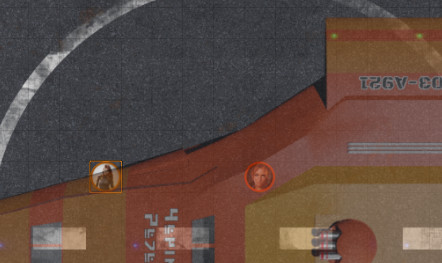New RPG Tools

I’ve picked up a couple of new digital RPG tools recently which I’m starting to take a look at. I’ve been pretty static over the last ten years in what I use, mainly because I’ve got comfortable with the tools I have and got used to their quirks and short comings. In theory, switching to higher level tools should save me a lot of time, but there’s always the risk that I spend more time learning and configuring them.
Foundry Virtual Tabletop
The first is FoundryVTT, a virtual table top software that is designed to be self-hosted (though it has hosted cloud options). I’ve been using Roll20 for so long that it comes naturally to me, and every other VTT I’ve tried has turned out to be incredibly confusing and difficult to use. Foundry seems to be actually usable, though suffers from a lack of support for Mongoose Traveller (it has Cepheus, which is similar, but Roll20 wins here).
The big difference with Foundry compared to Roll20 is the self hosting aspect. It runs like a web server, so needs someone with a bit of technical ability to run it up and have the rest of their group access it over the internet. I have it running on a RaspberryPi 4 (basically a small computer that fits in the palm of your hand and costs less than £100). Since I have a static IP and DNS options, hosting this myself shouldn’t be a problem. Others less technically inclined might have problems here. There are cloud options for those who don’t want to run Foundry themselves though.
As well as looking a bit nicer (and a bit more modern) than Roll20, it has a few functional extras as well:
- Built in support for doors and windows. Doors can be opened and closed (even by players), and automatically block movement and vision whilst closed.
- An ‘overhead’ graphics layer, which can be used for trees, rooves and other large objects. They obscure what is underneath, until a token walks up to them at which point they can see what’s below. Really useful for village maps, where you have a lot of houses, and want to see the outside of a building when players are outside, and then have it automatically switch to an internal map when players go inside.
- Add on support for multiple levels in a map. In Roll20, this has to be faked by having multiple maps on one screen.

I’m still getting used to it though. Somethings feel a lot easier in Roll20 – just dragging images into a map works better in Roll20 (there is a plugin in Foundry to allow that), and it has built in audio effects. Over time, I expect to find workarounds and solutions to the various issues though.
I may start looking into how hard it is to properly support Mongoose Traveller in Foundry. It means more Javascript, and learning all the APIs and templating needed though. I’ve also got a large number of helper scripts which would need to be ported, which probably won’t be fun.
This is the main cost of switching tools – the learning curve can be considerable, and it might be several months before I’m ready to switch.
On the other hand its support for Delta Green is really good, so switching over when we pick that game up again should be much easier.
Dungeondraft
The second is Dungeondraft (which I keep writing as Dungeoncraft), which is a mapping tool. Previously I’ve just use the GIMP when drawing my own maps, but Dungeondraft looks like it has a number of nice options, including import to Foundry. At the very least it exports as PNG format, so can be used to generate standard image files for import into anything. The import to Foundry automatically handles walls, doors and windows though, which is nice.
There are a lot of things it just does automatically. Drawing buildings is easy – it works out the walls and floors for you, and it’s easy to change the shape of a building. This is something that used to take ages to do by hand in the GIMP.

The downside of Dungeondraft is that it’s very focused on fantasy. It doesn’t have many options for modern or science fiction maps. There are some add-on modules, but the options are fewer compared to fantasy. I have found one Patreon which does provide some science fiction assets, but there are still plenty of holes in the selection.
I’ve started putting together some basic tile packs to cover the sort of thing I want, but it’s a non-trivial exercise. I do intend to try very hard to move to using this more often though. There has been less need of maps in Traveller, but there are some things coming up where maps will be useful.
Even if I just use it for drawing rough maps and exporting them as PNGs for import into Roll20/Foundry though, it’s probably going to be easier than doing everything by hand.